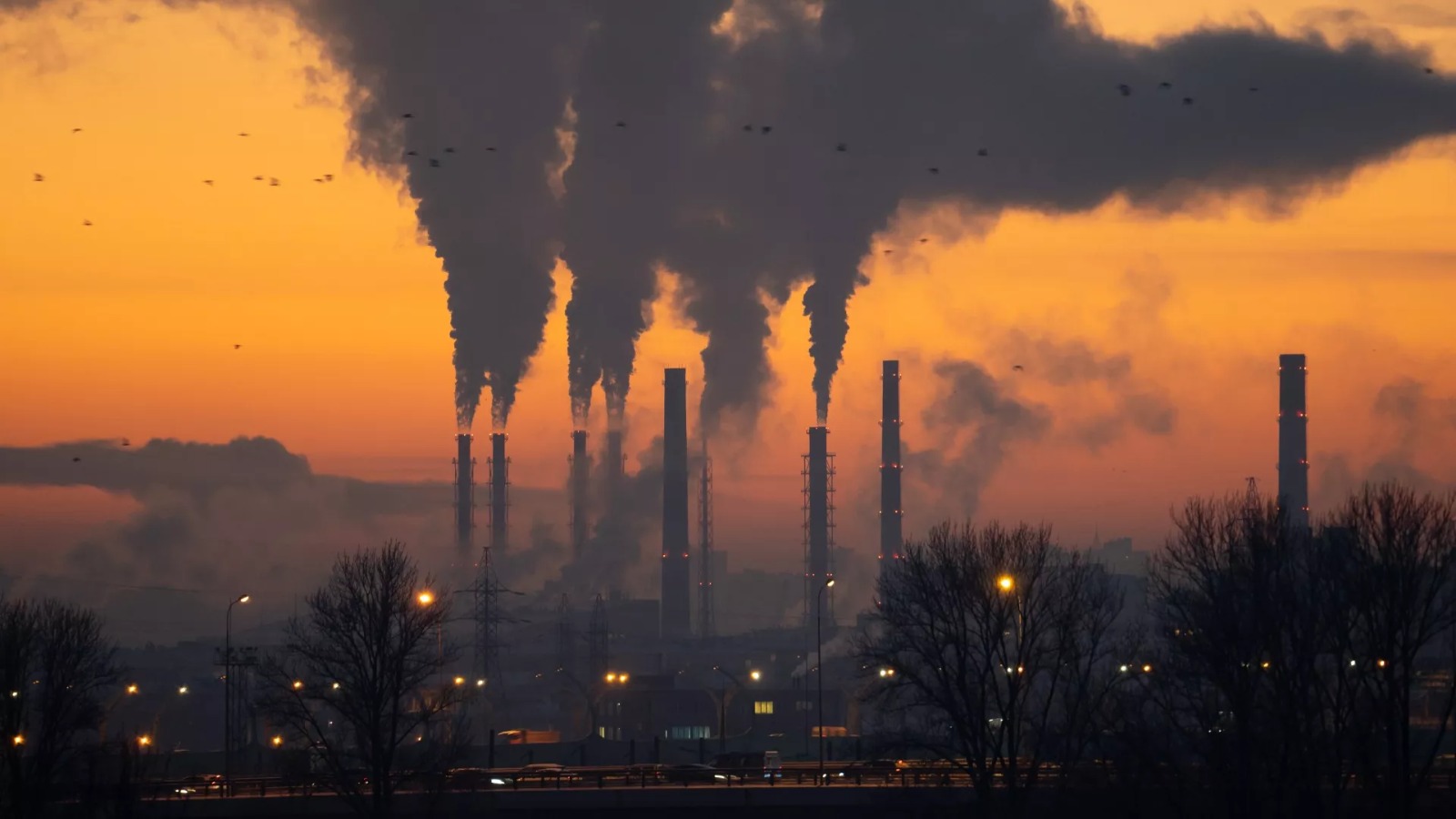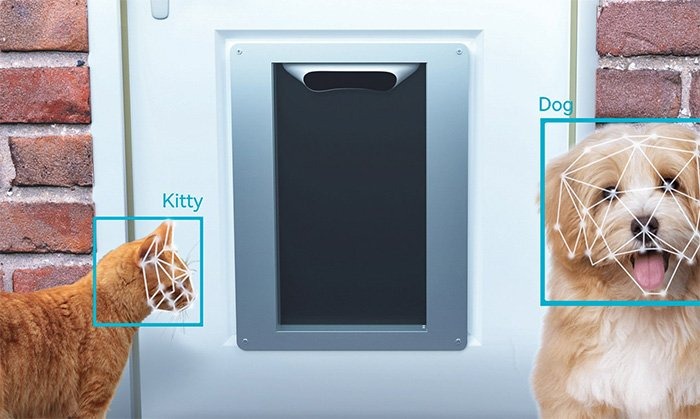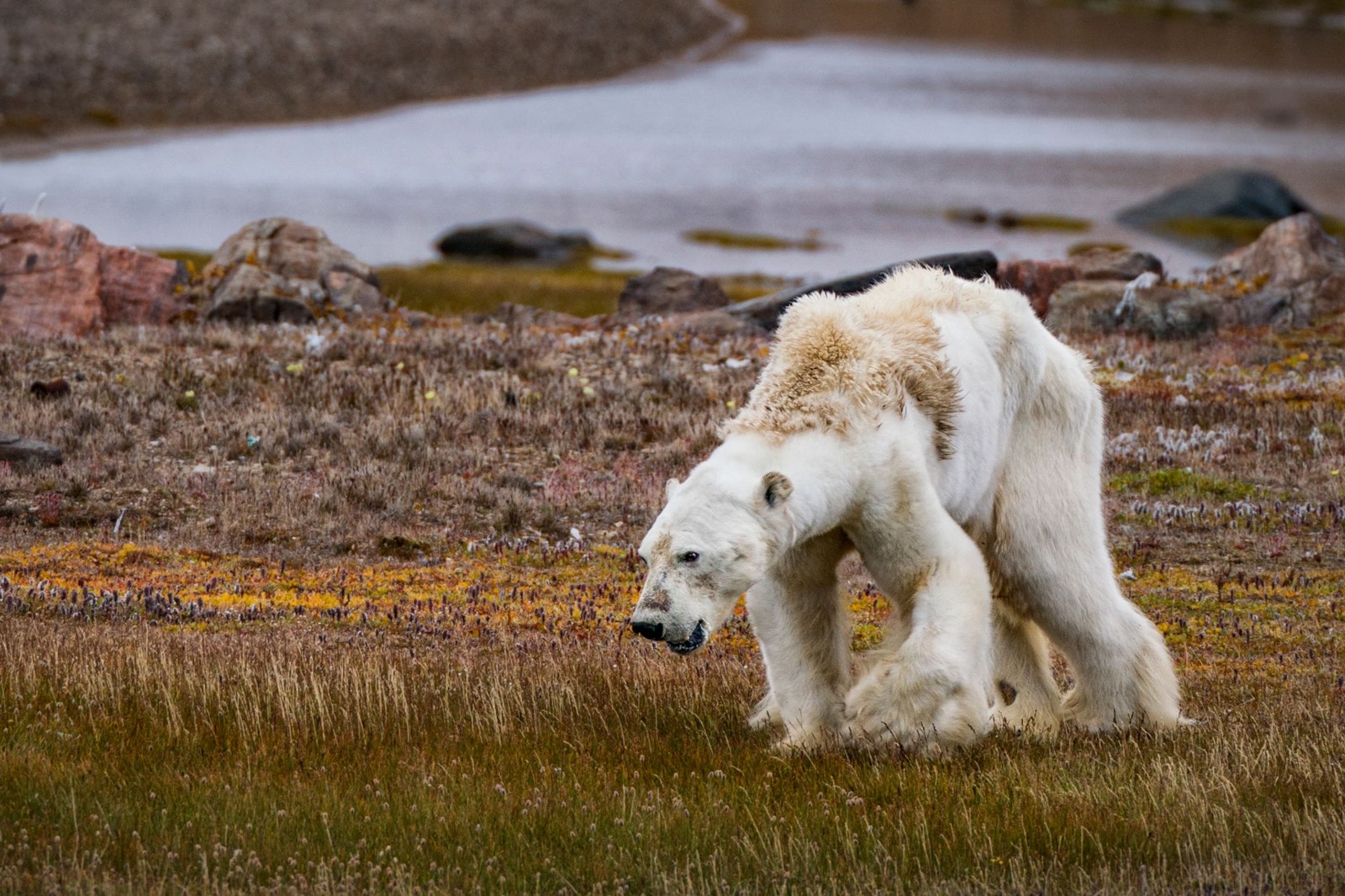
The Hidden Impact of Urban Pollution on Pet Health.
Urban pollution is an often-overlooked threat to pets, silently affecting their respiratory, cardiovascular, neurological, and behavioral health. From smog-filled air and contaminated water to chemical residues, noise, and heat stress, city environments pose complex risks. Understanding these hidden dangers is essential for pet owners to protect their animals and ensure long, healthy lives amidst urban challenges.
🐶 Pet Star
55 min read · 11, Oct 2025

Introduction: A Silent Threat Lurking in the City Air
Modern cities are bustling hubs of life — filled with dazzling lights, endless traffic, and towering skyscrapers. However, beneath this urban vibrancy lies an invisible danger that affects not only humans but also their beloved companions: urban pollution. While people often take measures to protect themselves — wearing masks, using air purifiers, or monitoring air quality — pets are frequently left unprotected. From smog-filled streets to contaminated water sources and chemical-laden parks, city environments pose a growing health challenge for animals that share our urban lives.
This article explores the multifaceted impact of urban pollution on pets, diving into the dangers of air, water, soil, and noise pollution — and how they silently erode pet health. It also offers insights into recognizing symptoms, prevention strategies, and long-term consequences for animals living in polluted cities.
1. Air Pollution: The Unseen Killer
Air pollution is arguably the most dangerous and least visible threat to urban pets. According to studies by veterinary associations, pets that live in cities are exposed to fine particulate matter (PM2.5 and PM10), carbon monoxide, nitrogen oxides, and volatile organic compounds (VOCs). These pollutants enter their systems through inhalation and direct contact with fur and skin.
Respiratory Distress in Pets
Cats and dogs have a more sensitive respiratory system than humans. When exposed to smog, car exhaust, cigarette smoke, or industrial emissions, they can develop:
- Chronic coughing and wheezing
- Nasal inflammation and discharge
- Decreased lung capacity
- Aggravation of pre-existing conditions like asthma or bronchitis
Brachycephalic breeds (those with short snouts, like pugs and bulldogs) are particularly vulnerable due to their restricted airways. In polluted environments, their breathing difficulties can quickly escalate to respiratory failure.
Long-Term Effects
Prolonged exposure to poor air quality can lead to systemic inflammation, affecting the heart, liver, and brain. Some studies even suggest a correlation between high pollution exposure and shortened lifespans in urban pets.
2. Water Pollution: The Invisible Toxin in the Bowl
Urban water systems are often contaminated with chemical runoff, heavy metals, and microplastics. Pets drinking from puddles, fountains, or poorly filtered taps may unknowingly consume toxins that accumulate over time.
Common Contaminants
- Lead and Mercury: These metals can cause neurological damage, lethargy, and loss of appetite.
- Pesticides and Herbicides: Common in lawns and parks, they seep into groundwater and cause vomiting, diarrhea, and skin irritation.
- Microplastics: Found in almost every city’s water supply, these particles can trigger gastrointestinal inflammation and hormonal disruptions.
Impact on Aquatic Pets
Even aquarium fish and amphibians aren’t spared. Polluted tap water used to fill tanks can contain chlorine and chloramines, disrupting aquatic ecosystems and damaging the sensitive gills and scales of fish.
3. Soil and Surface Contamination: The Ground Beneath Their Paws
Pets interact with the ground constantly — walking, digging, sniffing, or even licking their paws after a walk. In urban settings, sidewalks and parks are often coated with road salts, pesticides, oil residues, and heavy metals.
Toxic Absorption
When pets lick their paws after a walk, they inadvertently ingest harmful substances. Prolonged exposure can result in:
- Liver and kidney toxicity
- Skin rashes and chemical burns
- Neurological symptoms due to heavy metal accumulation
Hotspots of Contamination
- Parking lots and garages: Often contain oil, antifreeze, and brake fluid leaks.
- Public parks: Treated with fertilizers and pesticides to maintain greenery.
- Construction zones: Generate dust containing silica and lead particles.
Protective measures like pet-safe wipes and booties can significantly reduce exposure to these contaminants.
4. Noise Pollution: The Hidden Stressor
Unlike chemical pollutants, noise pollution doesn’t poison pets physically — but it does emotionally. The constant drone of traffic, construction work, and sirens can elevate cortisol (stress hormone) levels in animals.
Behavioral and Physiological Impacts
- Increased anxiety and restlessness
- Aggression or withdrawal
- Disrupted sleep patterns
- Elevated heart rate and blood pressure
Long-term exposure can even lead to permanent hearing loss, especially in pets living near busy roads or airports. Birds, in particular, are sensitive to loud environments and may stop singing or eating when stressed by noise.
5. Chemical Exposure from Household and Street Sources
Urban households are filled with cleaning agents, air fresheners, and insecticides. Pets are frequently exposed to these chemicals, especially when they rest on cleaned floors or inhale vapors.
Common Hazards
- Cleaning products: Ammonia, bleach, and phenols can cause skin irritation and respiratory distress.
- Deodorizers and candles: Contain artificial fragrances and formaldehyde, which can irritate the lungs.
- Pesticides and rodenticides: Fatal if ingested; even indirect exposure through treated lawns can be harmful.
Veterinarians warn that even “pet-friendly” labels don’t always guarantee safety — prolonged exposure can still affect sensitive animals, especially small breeds or exotic pets.
6. Heat Islands and Climate Stress
Cities are significantly hotter than surrounding rural areas due to the urban heat island effect, where concrete and asphalt trap heat. This phenomenon can lead to heat exhaustion and dehydration in pets.
Health Consequences
- Overheating and panting
- Burned paw pads from hot pavements
- Heatstroke leading to organ failure
Cats, rabbits, and small rodents are especially vulnerable as they lack efficient cooling mechanisms. Rising global temperatures only exacerbate these risks, making urban environments even more challenging for pets.
7. Food Contamination and Urban Diets
Even commercial pet foods can be affected by urban pollution through supply chain contamination. Polluted crops or fish used in pet food production may contain traces of pesticides, heavy metals, or plastic residues.
Feeding pets home-cooked meals or organic options may seem safer, but even those ingredients might be exposed to pollutants if sourced from urban areas. Thus, ensuring clean food and filtered water becomes a critical responsibility for pet owners.
8. Psychological and Behavioral Effects
Urban living not only impacts pets physically but also mentally. Crowded environments, lack of green space, and constant sensory overload can trigger anxiety and behavioral disorders.
Common Behavioral Symptoms
- Excessive licking or chewing (a stress response)
- Aggression or withdrawal
- Destructive behavior
- Loss of appetite or sleep disturbances
Pets require mental stimulation and calm environments to thrive. Lack of these conditions, combined with pollution-related stress, can lead to long-term emotional distress.
9. How Pet Owners Can Protect Their Pets
Despite these challenges, there are several steps urban pet owners can take to safeguard their furry (or feathered) companions:
Practical Steps
- Monitor air quality: Use AQI apps and limit outdoor walks during high pollution hours.
- Use air purifiers indoors: Helps remove allergens and fine particles.
- Clean paws and fur after walks: Prevents ingestion of toxins.
- Provide filtered or bottled water: Reduces exposure to heavy metals and chemicals.
- Choose pet-safe cleaning products: Avoid ammonia and phenol-based cleaners.
- Ensure proper ventilation: Reduces indoor chemical buildup.
- Plant indoor greenery: Certain plants can absorb air toxins (but check that they’re non-toxic to pets).
- Vet check-ups: Regular screenings help detect pollution-related illnesses early.
10. The Role of Policy and Urban Design
While individual responsibility matters, the solution to this issue also lies in better urban planning and environmental regulations. Policies that improve air quality, green space accessibility, and waste management directly benefit both humans and animals. Pet health is an overlooked but vital part of a city’s ecosystem — healthier pets often indicate a healthier city.
Urban pollution is a largely invisible yet insidious threat to the health of pets living in cities, affecting their respiratory, cardiovascular, neurological, and even psychological well-being, often in ways that go unnoticed by their owners until serious health problems arise; air pollution, one of the most pervasive dangers, exposes dogs, cats, and other urban pets to fine particulate matter, nitrogen oxides, volatile organic compounds, and carbon monoxide, which enter their delicate respiratory systems through inhalation, leading to chronic coughing, wheezing, nasal inflammation, decreased lung capacity, and the aggravation of pre-existing conditions such as asthma or bronchitis, while brachycephalic breeds like pugs and bulldogs, due to their naturally restricted airways, are particularly vulnerable and may suffer life-threatening respiratory distress in smog-filled environments, and prolonged exposure to airborne toxins can trigger systemic inflammation that impacts the heart, liver, and brain, potentially shortening their lifespan; water pollution presents another silent hazard, as urban water sources, including puddles, fountains, and even municipal taps, often carry heavy metals like lead and mercury, chemical runoff from pesticides and herbicides, microplastics, and other industrial contaminants, which, when ingested, accumulate in pets’ bodies over time, causing neurological damage, gastrointestinal inflammation, liver and kidney toxicity, hormonal disruption, vomiting, diarrhea, and lethargy, while aquatic pets like aquarium fish are not exempt, since chlorine, chloramines, and other chemicals in tap water can damage gills and disrupt delicate aquatic ecosystems, highlighting the need for filtered or bottled water; beyond air and water, soil and surface contamination also play a major role in urban pet health, as sidewalks, parks, and construction zones are often coated with road salts, oil residues, heavy metals, and pesticides, which pets ingest when licking their paws or chewing on objects, leading to skin rashes, chemical burns, liver and kidney damage, and neurological issues, with high-risk areas including parking lots, treated lawns, and dust-heavy construction sites, emphasizing the importance of paw cleaning, protective booties, and avoidance of contaminated areas; additionally, noise pollution, though non-chemical, exerts a profound stress on urban animals, raising cortisol levels and causing anxiety, restlessness, disrupted sleep, aggression, withdrawal, elevated heart rates, and even permanent hearing loss in pets living near highways, airports, or construction zones, while chemical exposure from household products such as cleaning agents, air fresheners, deodorizers, insecticides, and rodenticides further threatens pet health, as ammonia, bleach, phenols, formaldehyde, and artificial fragrances can cause skin irritation, respiratory distress, or even fatal poisoning if ingested, compounded by the fact that even products labeled “pet-safe” can still have long-term adverse effects on sensitive animals, particularly small breeds and exotic pets; urban heat islands, a phenomenon where concrete and asphalt trap heat, exacerbate these threats by subjecting pets to high temperatures that can lead to dehydration, panting, heat exhaustion, burned paw pads, and heatstroke, especially in cats, rabbits, and rodents that lack efficient thermoregulation, and rising global temperatures further amplify these risks; diet, too, is affected indirectly, as urban-sourced ingredients in pet foods may contain pesticide residues, heavy metals, or microplastics, and even home-cooked meals using locally grown produce may not be free from contamination, making careful selection of food and water critical for maintaining pet health; the cumulative effect of these environmental factors also extends to behavioral and psychological well-being, with pets displaying stress-related behaviors such as excessive licking or chewing, aggression, withdrawal, loss of appetite, and disrupted sleep patterns, illustrating that the urban environment challenges both their physical and emotional resilience; fortunately, pet owners can take practical measures to mitigate these risks, including monitoring air quality and avoiding walks during high pollution periods, using indoor air purifiers, regularly cleaning paws and fur, providing filtered or bottled water, choosing chemical-free cleaning products, maintaining proper ventilation, using non-toxic indoor plants, and ensuring routine veterinary check-ups to detect pollution-related illnesses early, while city planners and policymakers also play a vital role by implementing stricter emission controls, expanding green spaces, improving water quality, and regulating chemical usage to create healthier urban habitats; ultimately, the health of pets in urban areas serves as both a reflection and a warning about the broader environmental quality, as their vulnerability to air, water, soil, noise, chemical, and heat stress underscores the intricate interconnections between human activity, urban design, and animal welfare, and addressing these challenges requires a multifaceted approach that combines individual vigilance, informed caregiving, preventive veterinary care, and systemic urban reforms; raising awareness about pollution’s hidden impact on pet health is essential, as many pet owners underestimate the subtle yet significant ways in which environmental toxins, noise, and urban stressors can compromise longevity, quality of life, and behavior in their animal companions, and by adopting proactive measures such as paw hygiene, diet management, limiting exposure to contaminated water and soil, reducing indoor chemical use, and providing mental enrichment to alleviate stress, owners can significantly reduce the adverse consequences of urban living; furthermore, fostering stronger connections between veterinary science, environmental monitoring, and urban planning can help identify pollution hotspots, establish safe zones for pets, and promote policies that protect vulnerable species, while educational campaigns can inform owners about breed-specific vulnerabilities, the dangers of household and outdoor chemicals, and the importance of timely intervention when early signs of respiratory, dermatological, or behavioral issues arise; in conclusion, while pets cannot understand or avoid the invisible hazards of city life, humans bear the responsibility to safeguard them, recognizing that urban pollution affects every aspect of their health, from breathing and digestion to mental well-being and longevity, and that a combination of individual action, informed care, and systemic environmental improvements is essential to ensure that pets can thrive amidst the challenges of modern urban living, highlighting the broader truth that protecting animal health ultimately enhances the quality of life for all urban inhabitants.
Urban pollution poses a largely invisible yet profoundly dangerous threat to the health and well-being of pets living in cities, affecting their respiratory, cardiovascular, neurological, and behavioral systems in ways that often go unnoticed until serious illnesses develop, and while humans may take measures such as wearing masks, using air purifiers, and monitoring air quality, pets are left exposed to a toxic combination of airborne, waterborne, soil-based, and noise-related pollutants that accumulate over time and compromise their overall quality of life; air pollution, one of the most critical and pervasive dangers, exposes dogs, cats, and other urban animals to fine particulate matter (PM2.5 and PM10), nitrogen oxides, volatile organic compounds, carbon monoxide, and industrial emissions, which enter their delicate respiratory systems and trigger chronic coughing, wheezing, nasal inflammation, reduced lung capacity, and the exacerbation of pre-existing conditions such as asthma, bronchitis, and heart disease, with brachycephalic breeds such as pugs, bulldogs, and Persian cats particularly vulnerable due to their naturally restricted airways, leading to severe respiratory distress in smog-laden environments, while long-term exposure can cause systemic inflammation that damages internal organs, including the liver, heart, and brain, potentially shortening life expectancy; water pollution further compounds this threat, as urban water sources such as municipal taps, fountains, puddles, and untreated streams often contain chemical runoff, pesticides, herbicides, heavy metals like lead and mercury, microplastics, and other industrial contaminants, which when ingested can accumulate in pets’ bodies over time, causing neurological disorders, gastrointestinal inflammation, kidney and liver dysfunction, hormonal imbalances, vomiting, diarrhea, and lethargy, and even aquatic pets like fish and amphibians are affected by chlorine, chloramines, and chemical residues in tap water, which compromise gill function, immune health, and overall vitality, underscoring the need for filtered or bottled water in urban households; soil and surface contamination is another silent hazard, as sidewalks, playgrounds, parks, and construction zones are often coated with road salts, pesticides, oil residues, and heavy metals, which pets ingest when licking paws or grooming themselves, resulting in skin rashes, chemical burns, liver and kidney damage, neurological impairment, and long-term health deterioration, with particularly high-risk areas including parking lots, treated lawns, and dust-laden construction sites, making paw cleaning, protective booties, and avoiding contaminated areas essential preventive strategies; noise pollution, although non-chemical, significantly stresses urban pets, elevating cortisol levels and causing behavioral changes such as anxiety, restlessness, aggression, withdrawal, sleep disruption, and even permanent hearing loss, particularly in pets living near highways, airports, construction zones, or industrial areas, while urban heat islands exacerbate the problem by raising temperatures due to concrete and asphalt, exposing pets to heat exhaustion, dehydration, burned paw pads, heatstroke, and organ failure, with smaller animals like rabbits, rodents, and cats being especially susceptible due to inefficient thermoregulation; in addition to environmental pollutants, chemical exposure from household cleaning products, air fresheners, scented candles, insecticides, and rodenticides creates further risks, as ammonia, bleach, phenols, formaldehyde, and artificial fragrances irritate the skin, eyes, and lungs, and accidental ingestion of insecticides or rodenticides can be fatal, while even “pet-safe” products may have long-term negative effects, particularly on sensitive breeds or exotic pets; diet is also indirectly affected by urban pollution, as ingredients in pet foods sourced from contaminated urban crops or fish may carry pesticide residues, microplastics, or heavy metals, while home-cooked meals are only as safe as the raw materials used, making careful selection of food and water essential to prevent bioaccumulation of toxins in pets’ bodies; the cumulative effect of these environmental stressors manifests in behavioral and psychological changes, with pets exhibiting excessive licking, chewing, aggression, withdrawal, loss of appetite, hyperactivity, or disrupted sleep, reflecting the intersection of physical harm and emotional distress caused by urban living; practical preventive measures for pet owners include monitoring air quality and avoiding outdoor walks during peak pollution hours, using indoor air purifiers, cleaning paws and fur after walks, providing filtered or bottled water, selecting chemical-free household products, maintaining proper ventilation, incorporating non-toxic indoor plants that absorb pollutants, and scheduling regular veterinary check-ups to detect early signs of pollution-related illnesses, while urban planning and environmental policy also play critical roles in mitigating risks by regulating emissions, improving water quality, creating more green spaces, reducing chemical usage in public areas, and implementing protective measures for animals, as healthier urban environments for pets often correlate with healthier environments for humans; awareness is essential because many pet owners underestimate how pollution can subtly and gradually compromise respiratory function, cardiovascular health, neurological integrity, liver and kidney function, immune system efficiency, behavior, and lifespan, and by adopting preventive strategies, monitoring symptoms such as coughing, lethargy, vomiting, skin irritation, unusual aggression, or anxiety, and seeking veterinary advice promptly, owners can significantly reduce the adverse effects of urban pollutants; in conclusion, pets are not only vulnerable to visible environmental dangers but are also silently affected by invisible, cumulative urban pollutants that degrade their health and quality of life, making it imperative for pet owners to combine vigilance, informed care, and proactive measures with broader systemic solutions such as policy reform, environmental monitoring, urban green initiatives, and community awareness, because protecting pets from urban pollution ultimately reflects a commitment to the overall health of the city ecosystem, ensuring that animals can thrive alongside humans despite the challenges of modern urban living.
Conclusion
Urban pollution is a silent predator affecting countless pets worldwide. Airborne toxins lead to respiratory diseases, contaminated water disrupts internal organs, and surface chemicals corrode skin and digestive systems. Noise and heat pollution, though less visible, erode pets’ emotional well-being and physical resilience.
The issue demands attention not just from pet owners but from policymakers, veterinarians, and environmental authorities. While we cannot eliminate all pollutants instantly, awareness and preventive care can significantly mitigate the risks. Clean water, safe environments, and controlled exposure are the foundations of ensuring that pets live healthy, happy lives amidst the urban chaos.
Ultimately, the health of pets mirrors the health of the environment — when the city becomes toxic for them, it becomes toxic for us too. Protecting them means protecting the balance of urban life itself.
Q&A Section
Q1: How does air pollution specifically affect dogs and cats?
Ans: Air pollution causes respiratory inflammation, coughing, sneezing, and lung damage in dogs and cats. Prolonged exposure can lead to chronic bronchitis, heart strain, and reduced lifespan, especially in breeds with short noses like pugs or bulldogs.
Q2: Can pets get sick from drinking tap water in polluted cities?
Ans: Yes. Tap water can contain chlorine, heavy metals, and pesticide residues that cause vomiting, kidney damage, and neurological issues. It’s advisable to use filtered or bottled water for pets in urban areas.
Q3: Is noise pollution really harmful to pets?
Ans: Absolutely. Prolonged exposure to loud sounds increases stress hormones, disrupts sleep, and can even cause permanent hearing loss. Pets living near busy roads or airports are most at risk.
Q4: What are the signs that my pet is affected by urban pollution?
Ans: Common symptoms include excessive coughing, watery eyes, lethargy, skin irritation, vomiting, or unusual behavior such as anxiety or aggression. If these persist, consult a veterinarian.
Q5: How can I minimize pollution exposure for my pet in a city?
Ans: Limit outdoor time during smoggy days, wipe paws after walks, use pet-safe cleaning agents, provide clean water, and ensure regular vet check-ups. Indoor air purifiers and potted plants also help improve air quality.
Similar Articles
Find more relatable content in similar Articles

Smart Homes for Pets: Automated Feeders, Doors, and Mo..
As smart home technology advan.. Read More

How Pets Strengthen Family Bonds...
Pets are more than just compan.. Read More

How Climate Change Affects Wild and Domestic Animals...
Climate change is dramatically.. Read More

Sustainable Pet Products: What to Look for in 2025...
As sustainability becomes a ce.. Read More
Explore Other Categories
© 2024 Copyrights by rPets. All Rights Reserved.